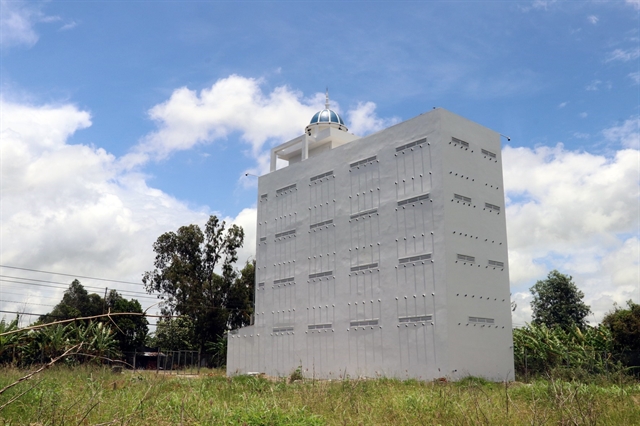 Society
Society

The rapid growth of the swift-breeding industry across the country could lead to negative effects if there is no long-term development plan, according to Hạ Thúy Hạnh, deputy director of the National Agriculture Extension.

|
| A building housing swift nests in Bình Giang Commune, Hòn Đất District of the southern province Kiên Giang. — VNA/VNS Photo Lê Huy Hải |
HCM CITY — The rapid growth of the swift-breeding industry across the country could lead to negative effects if there is no long-term development plan, according to Hạ Thúy Hạnh, deputy director of the National Agriculture Extension.
Hạnh spoke at a meeting held last week in HCM City to discuss solutions for sustainable development of farming swiftlets in southern cities and provinces.
Farming swiftlets for their edible bird nests had developed in an uncoordinated manner, she said.
“The lives of local residents around swift houses could be affected by the noise of birds and machines used to attract them,” she said.
As of October, the country had more than 14,350 swift houses in 42 cities and provinces, mostly in the southern region.
The number of swift houses sharply increased by 88.5 per cent compared to 2017.
The Cửu Long (Mekong) Delta province of Kiên Giang has the largest number of 2,245 swiftlet farming facilities.
About 68 tonnes of birds’ nest were exported in 2018. Major export markets include Hong Kong, China, the US, Australia, and New Zealand.
Experts said that Vietnamese bird's nest has a higher quality compared to those from other countries, Hạnh said.
“But exporting bird's nest as raw material and through unofficial trading channels brings low value and profits,” she said.
Mai Thế Hào, deputy head of the Southern Animal Husbandry Department under the Ministry of Agriculture and Rural Development, said local authorities should have plans for swiftlet farming strategy areas to minimise the negative impact.
HCM City, and Khánh Hòa, Phú Yên, Ninh Thuận and Tiền Giang provinces had zoned areas for swiflet farming.
“More strict management and long-term plans in farming swifts are necessary for the industry’s sustainable growth,” he said.
Expanding the effective models of swiftlet farming, regulations about specifications and standards, and assessment of environmental impact of the swift houses are also needed.
According to Đỗ Tú Quân, head of the Việt Nam Swiftlet Farming Association, the demand for swiftlet nests is forecast to increase in the coming time. China is the largest import market for edible bird's nest.
“Swift breeders should improve the quality of their bird's nest to meet export demands,” she said.
Creating close linkages between bird nest production companies, swiftlet farming associations and swift breeders were needed.
“Promoting official trade will help raise the export value of Vietnamese bird's nest,” she said.
Last year, the country provided nearly 200 tonnes of birds’ nest for both domestic and foreign markets.
The swift-breeding industry is expected to achieve revenue of about VNĐ3 trillion ($129 million) next year, and reach VNĐ6 trillion ($258 million) annually in the following years.
“Building the swiftlet farming developing strategy would play an important role in promoting the industry,” she said.
In addition, promoting brands of Vietnamese birds’ nest products, further investing in technology to product processing, and building bird's nest production chains were also needed. — VNS




